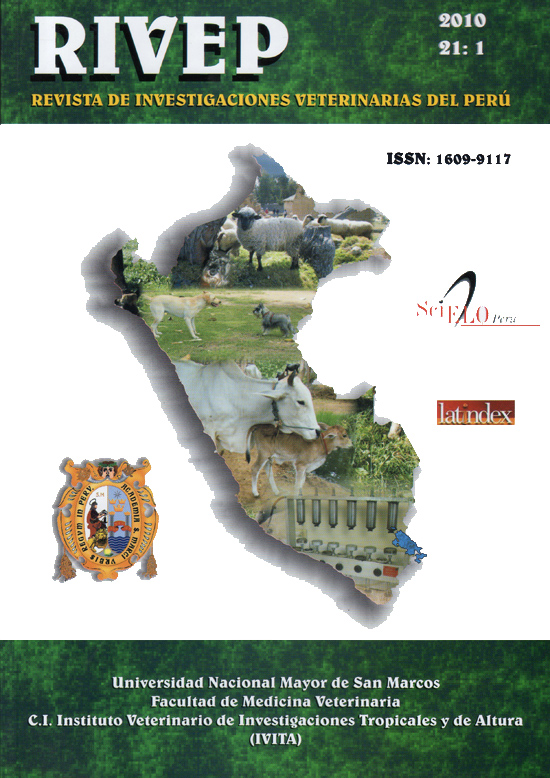BACTERIAL FLORA IN THE DIGESTIVE TRACT OF HELIX ASPERSA MÜLLER SNAILS UNDER TWO BREEDING SYSTEMS
DOI:
https://doi.org/10.15381/rivep.v21i1.358Keywords:
Helix aspersa, caracol, flora bacteriana, crianza extensiva, crianza intensivaAbstract
El objetivo del estudio fue comparar la flora bacteriana de intestino y hepatopáncreas del caracol Helix aspersa Müller criados en dos sistemas de producción: intensivo y extensivo. Se colectaron 30 caracoles adultos aparentemente sanos por cada sistema de producción, en seis criaderos ubicados en la provincia de Lima. Se tomó muestras de mucosa intestinal y parénquima del hepatopáncreas de cada individuo, empleando protocolos de aislamientos establecidos para bacterias aerobias y aerobias facultativas. Se aisló bacterias de 15 géneros: Escherichia, Citrobacter, Klebsiella, Enterobacter, Serratia, Hafnia, Proteus, Providencia, Aeromonas, Staphylococcus, Streptococcus, Enterococcus, Micrococcus, Pseudomonas, Acinetobacter; y bacilos gramnegativos no fermentadores (BNF). Se obtuvo 193 cepas en las muestras de caracoles del sistema extensivo, donde el género Escherichia fue el de mayor frecuencia (17.1%, 33/193); mientras que en caracoles del sistema intensivo se aisló 183 cepas, donde el género Klebsiella fue el de mayor frecuencia (17.5%, 32/183). Por otro lado, el género más frecuentemente aislado en intestino y hepatopáncreas fue Klebsiella (13.6%, 25/184 y 17.2%, 33/192, respectivamente). Bacterias de los géneros Providencia y Micrococcus solo se encontraron en el hepatopáncreas. Hubo diferencias estadísticas en la frecuencia de algunas bacterias aisladas dentro de cada tipo de muestra por efecto del sistema de crianza.Downloads
Downloads
Published
Issue
Section
License
Copyright (c) 2010 Mirella Villena A., Siever Morales C., Javier Soto P., Marco Enciso H.

This work is licensed under a Creative Commons Attribution-NonCommercial-ShareAlike 4.0 International License.
AUTHORS RETAIN THEIR RIGHTS:
a. Authors retain their trade mark rights and patent, and also on any process or procedure described in the article.
b. Authors retain their right to share, copy, distribute, perform and publicly communicate their article (eg, to place their article in an institutional repository or publish it in a book), with an acknowledgment of its initial publication in the Revista de Investigaciones Veterinarias del Perú (RIVEP).
c. Authors retain theirs right to make a subsequent publication of their work, to use the article or any part thereof (eg a compilation of his papers, lecture notes, thesis, or a book), always indicating the source of publication (the originator of the work, journal, volume, number and date).



